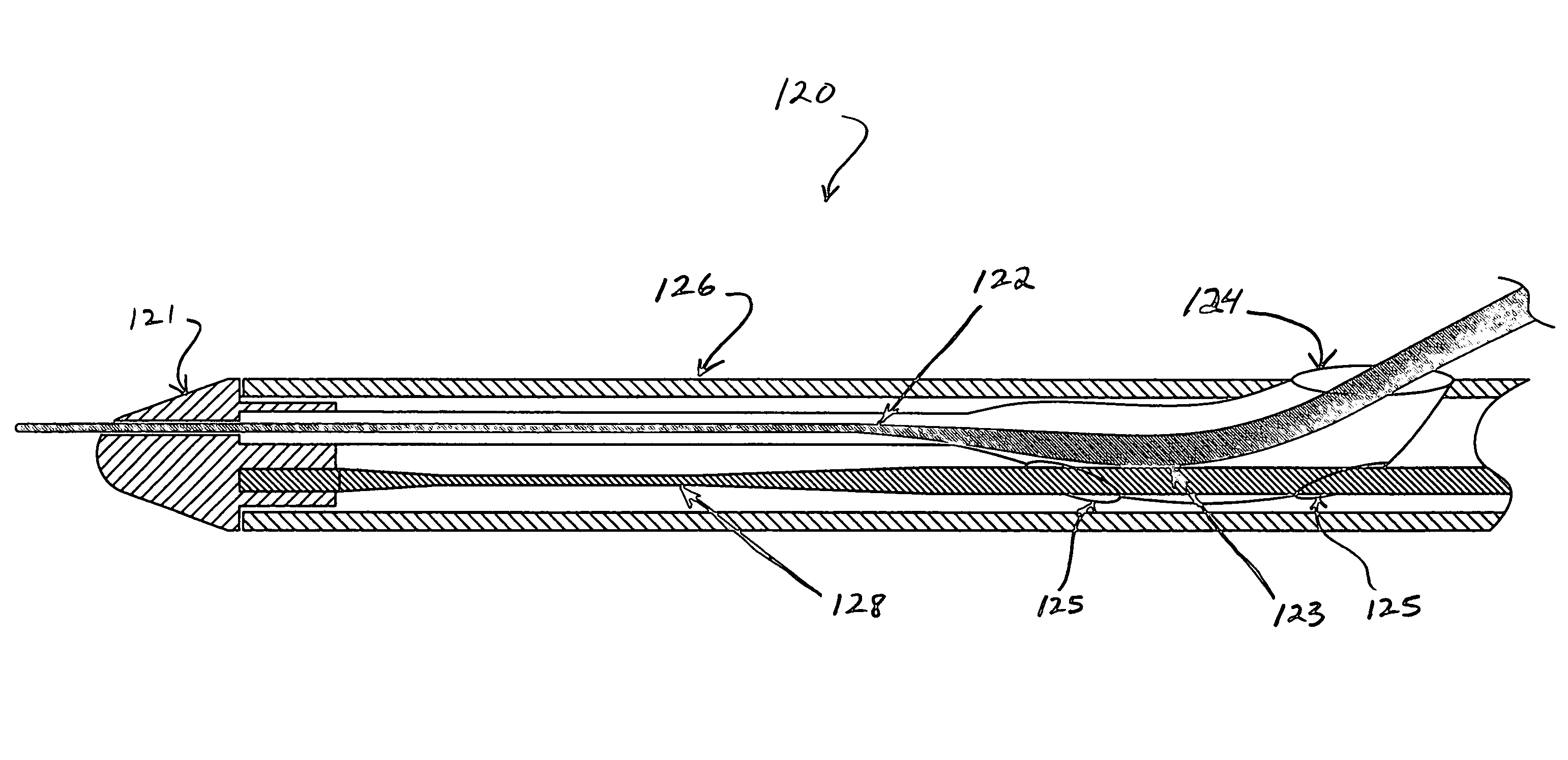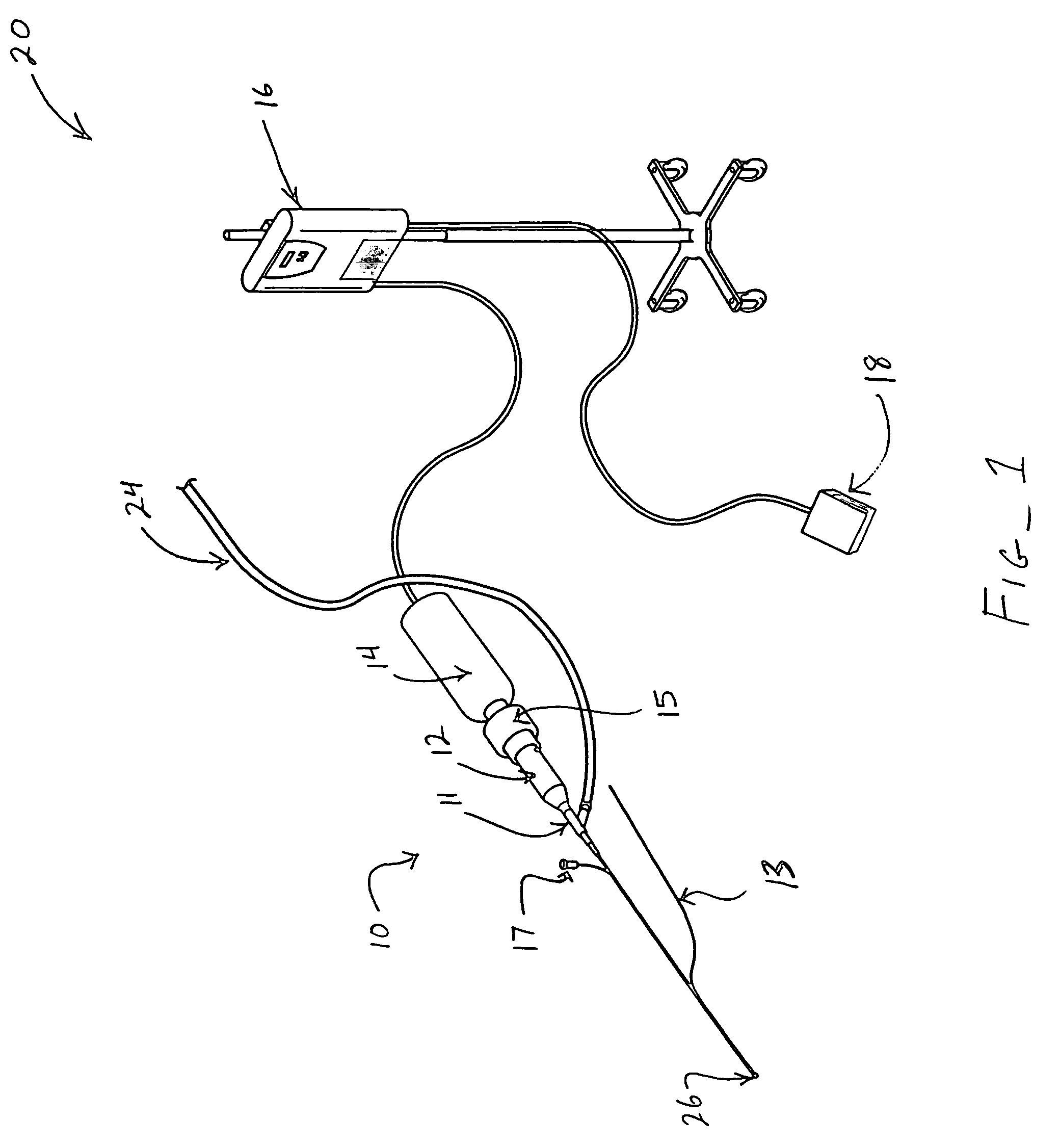Steerable ultrasound catheter
a catheter and ultrasound technology, applied in the field of medical devices and methods, can solve the problems of continuing to be difficult to develop a catheter and the difficulty of manipulating the currently available ultrasound catheter devices, and achieve the effects of enhancing the manipulation of the catheter body, enhancing flexibility, and enhancing the disruption of blood vessel obstruction
- Summary
- Abstract
- Description
- Claims
- Application Information
AI Technical Summary
Benefits of technology
Problems solved by technology
Method used
Image
Examples
Embodiment Construction
[0031]Ultrasound catheter devices and methods of the present invention generally provide for enhanced treatment of occlusive intravascular lesions. Catheter devices generally include a catheter body, an ultrasound energy transmission member disposed within the catheter body and a distal head coupled with the energy transmission member and disposed adjacent the distal end of the catheter body. The ultrasound transmission member transmits ultrasound energy from an ultrasound transducer to the distal head, causing the head to vibrate and, thus, disrupt vascular occlusions. A number of improved features of such ultrasound catheter devices are described more fully below.
[0032]Referring now to FIG. 1, one embodiment of an ultrasound catheter system 20 suitably includes an ultrasound catheter device 10, including a proximal end connector 12 for coupling device 10 with an ultrasound transducer 14, and an ultrasound generator 16 coupled with transducer 14 and a foot-actuated on / off switch 18...
PUM
 Login to View More
Login to View More Abstract
Description
Claims
Application Information
 Login to View More
Login to View More - R&D
- Intellectual Property
- Life Sciences
- Materials
- Tech Scout
- Unparalleled Data Quality
- Higher Quality Content
- 60% Fewer Hallucinations
Browse by: Latest US Patents, China's latest patents, Technical Efficacy Thesaurus, Application Domain, Technology Topic, Popular Technical Reports.
© 2025 PatSnap. All rights reserved.Legal|Privacy policy|Modern Slavery Act Transparency Statement|Sitemap|About US| Contact US: help@patsnap.com



